Every brand that you see around you has a unique story. But you will hardly see any brands that are mentioned in your history textbooks and exist in the current era. One such brand is AMUL. The “Amul Case Study” is a hot topic in the market. Reason? Because it has a glorious past, a magnificent present, and a successful future. If you reside in India, then you would be familiar with this brand. What’s so special about it? Why is it associated with our history? You may ask. Because AMUL was a significant part of the “White Revolution.” This revolution turned India from a “milk-deficit country” into the “largest milk producer” in the world.
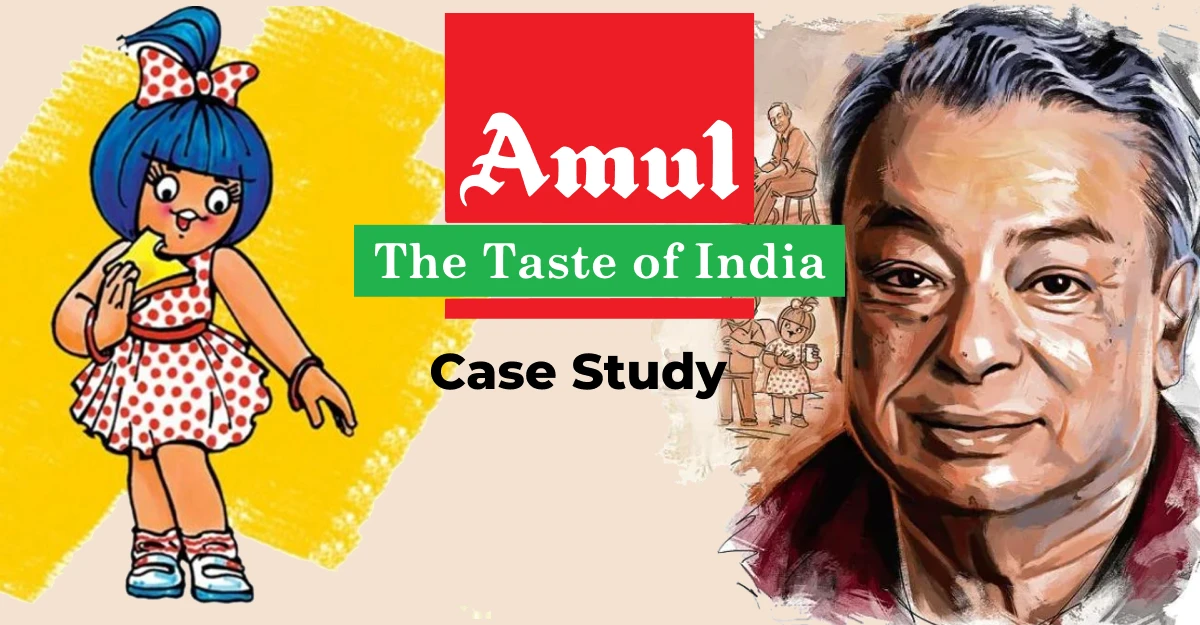
Its journey is related to our nationalism. Ever since its establishment it never lost its spirit. It created a successful empire through the great leadership and philosophy of “Dr.Verghese Kurien”- The father of the White Revolution. Are you curious to know about Amul’s journey? If yes, then stick to this write-up of “Amul Case Study” where we will explain how it started and built its successful empire.
Keep reading!
How Amul Started?
You must have heard the famous phrase- “Rome wasn’t built in a day.” It means the building up of great things takes time. The same is the case with Amul. The foundation of Amul involves a tragic history of milk farmers and the government’s assistance. And most importantly the contribution of Dr. Verghese Kurien. How did it occur and benefited us? You will get to know it all in the following sections of Amul Case Study.
1. The 1940s: Exploitation of Milk Producers (Milk Farmers)
Revolution doesn’t begin just in the blink of an eye. It takes years and years of exploitation, injustice, torcher, blood, sweat, and tears. Similar were the conditions of our milk producers back in the era of 1940s. Our milk producers possessed hardly one or two cows/buffalo. They traveled long distances in the scorching heat of summer just to get exploited by the middlemen/brokers. Yes, exploitation! The next few sections describe the tragic saga of Indian milk farmers in the 1940s.
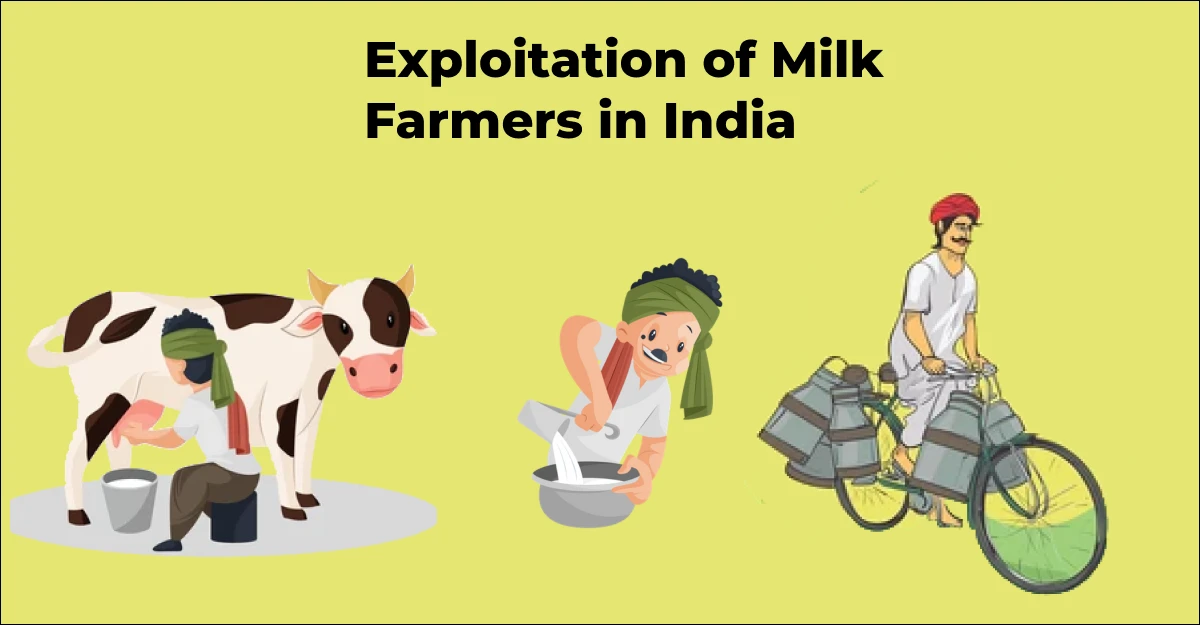
2. Paying Negligible Prices for Milk to Farmers (Milk Producers)
In those days, brokers or middlemen randomly determined the prices of milk. Unlike today there were no criteria for determining the price of milk based on its lipid/fat and protein quantity. The arbitrary prices of milk were nearly negligible. Milkmen hardly earned pennies by selling milk. Their poverty seemed to be eternal until Amul arrived! We will discuss it in detail in the upcoming sections. The majority of those brokers worked for Polson. See the next section for more details.
3. Monopoly of Polson
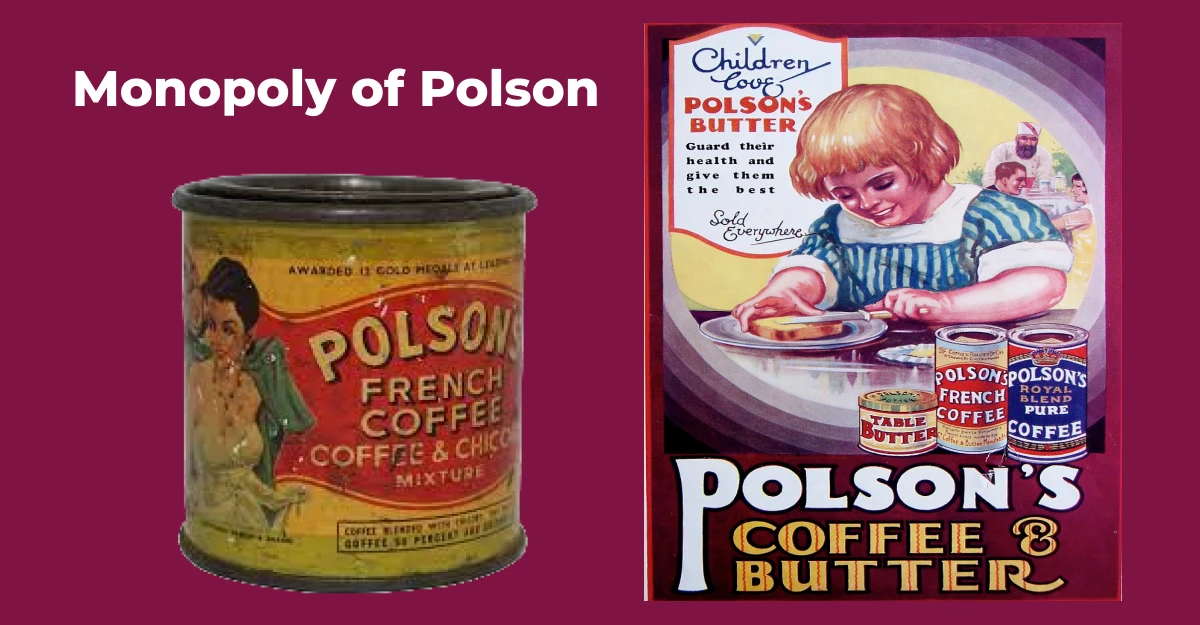
This was another punch for milkmen. Apart from brokers, the company Polson was ruling the dairy industry. The British government had given it the right to collect milk from Kaira (Kheda, Gujarat) and supply it to Mumbai. Can you guess the condition of customers? They had to buy milk at the price of gold! The price of milk was sky-high and Polson used to earn large chunks of money due to its monopoly.
So, not only milk producers but milk consumers were exploited too! Only the rich could afford milk & milk products in that era.
4. Pre-Independence Era of 1946: The Milk Strike Saga
Through the years the level of exploitation of farmers by the local trade cartel (middlemen) crossed the threshold and finally exploded. The milk producers (farmers) of the district along with Tribhuvandas Patel approached Sardar Vallabhbhai Patel for a sustainable solution. The great Indian patriot advised them to get rid of those brokers. Inspired by the national freedom movement, the milk farmers went on a milk strike in 1946. They refused to sell the milk to those town cartels.
5. 14th December 1946: The Birth of AMUL
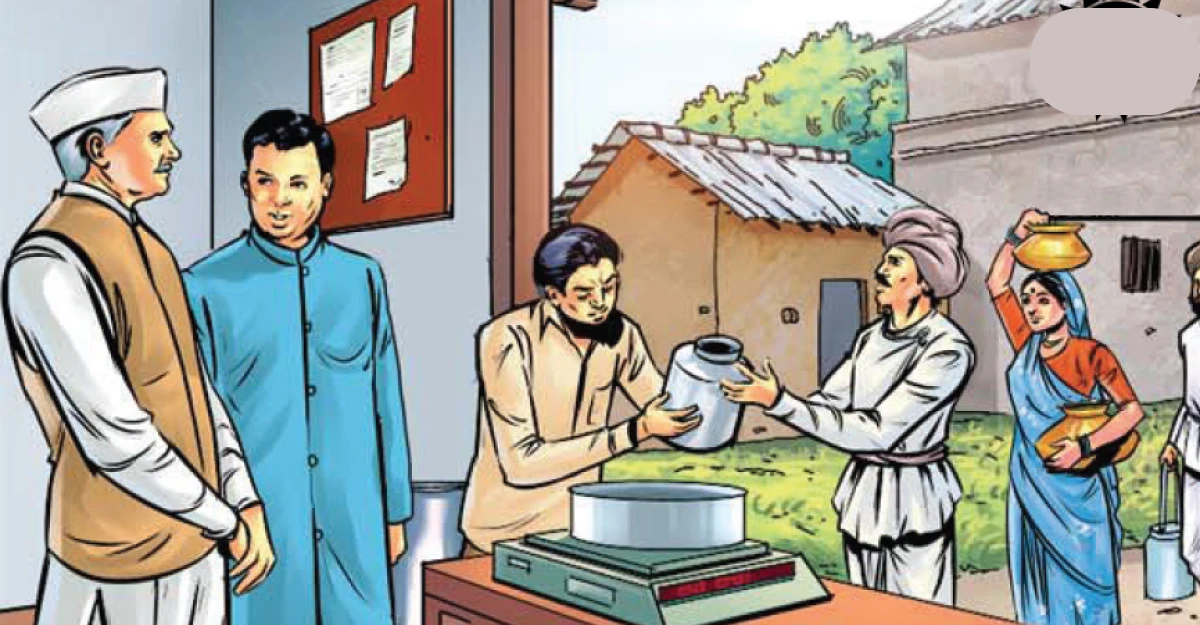
Sardar Vallabhbhai Patel advised the milk farmers to form a cooperative society through which they could supply milk directly. Working without the need for middlemen was no less than a blessing for farmers. But it was not possible without great leadership. So, he sent Morarji Desai to organize the farmers. A meeting took place in Chaklasi (Kheda, Gujarat), and a decentralized milk collection cooperative was formed. It was named “Anand Milk Union Limited.” This long name was shortened to its acronym AMUL. Earlier its name was KDCMPUL (Kaira District Cooperative Milk Producers’ Union Limited).
How did it work?
In AMUL, the milk farmers gave 1-2 liters of milk per day. Since there were many farmers, the amount of milk was high too! Thus, they collected 250 liters of milk per day in the villages of Anand (Gujarat).
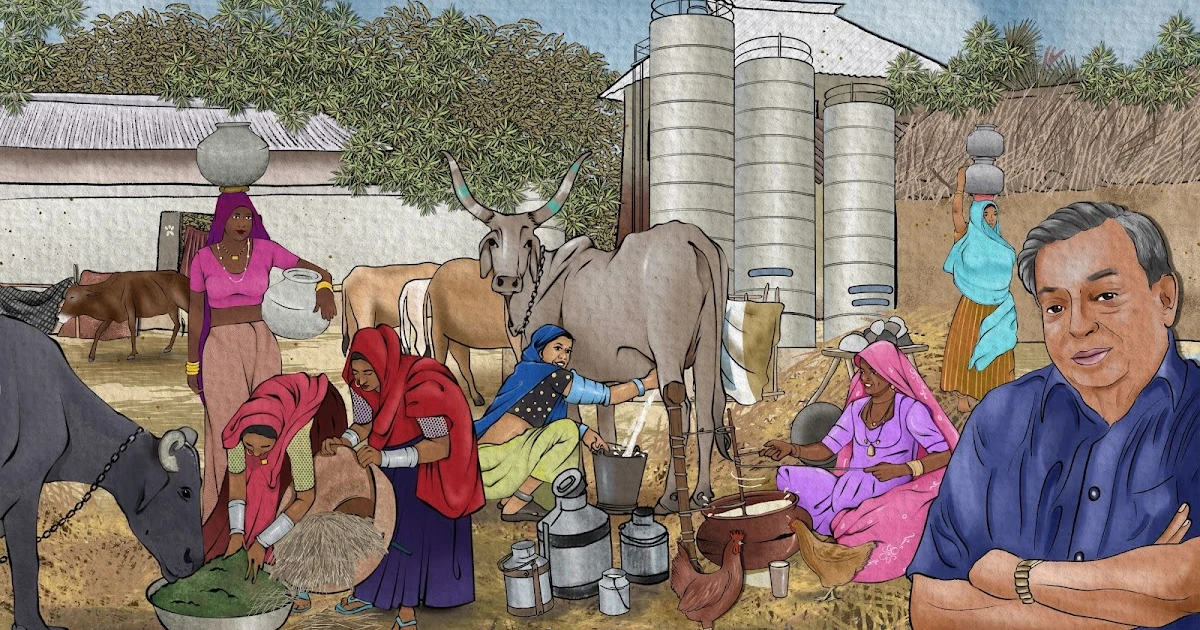
H.M. Dalaya (Indian inventor) introduced the technique of making skim milk powder from a liquid form of milk. This was a technological breakthrough that revolutionized our dairy industry.
Such a cooperative association with the name AMUL was formed in numerous districts of Gujarat to supply milk to Bombay (Mumbai). This cooperative was further developed and expanded under Dr. Verghese Kurien. Later, he became the father of the white revolution in India. How? You will get to know in the further sections.
6. Era of 1966: Birth of Amul’s Ad Girl
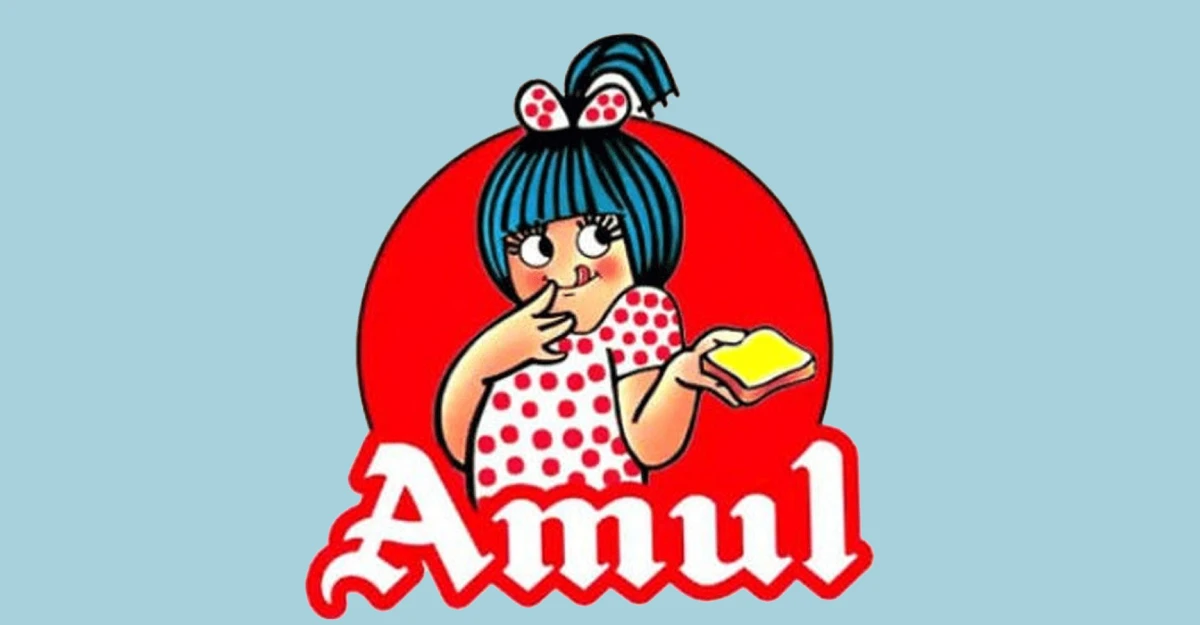
Dr.Verghese Kurien realized the fact that they need a strong brand identity to survive in the FMCG market. So, first of all, he renamed KDCMPUL as Amul. Do you know there is an interesting background in the nomenclature of AMUL? The acronym AMUL is synonymous with the Hindi word “Amulya” meaning “Priceless.” This great meaning has a strong emphasis on the brand-building of AMUL. But renaming the brand wasn’t enough. Also, he wasn’t an expert in the field of marketing/advertising. Therefore, he handed the responsibility for Amul’s advertisements to Sylvester da Cunha in 1966. The team of Sylvester created and conceptualized this iconic Amul girl with a tagline- “Utterly butterly delicious.” This tagline was made for Amul butter.
Note: Go through the article “Amul Marketing Strategies” to have in-depth information about the marketing strategies used by Amul.
7. Era of 1970s: The White Revolution
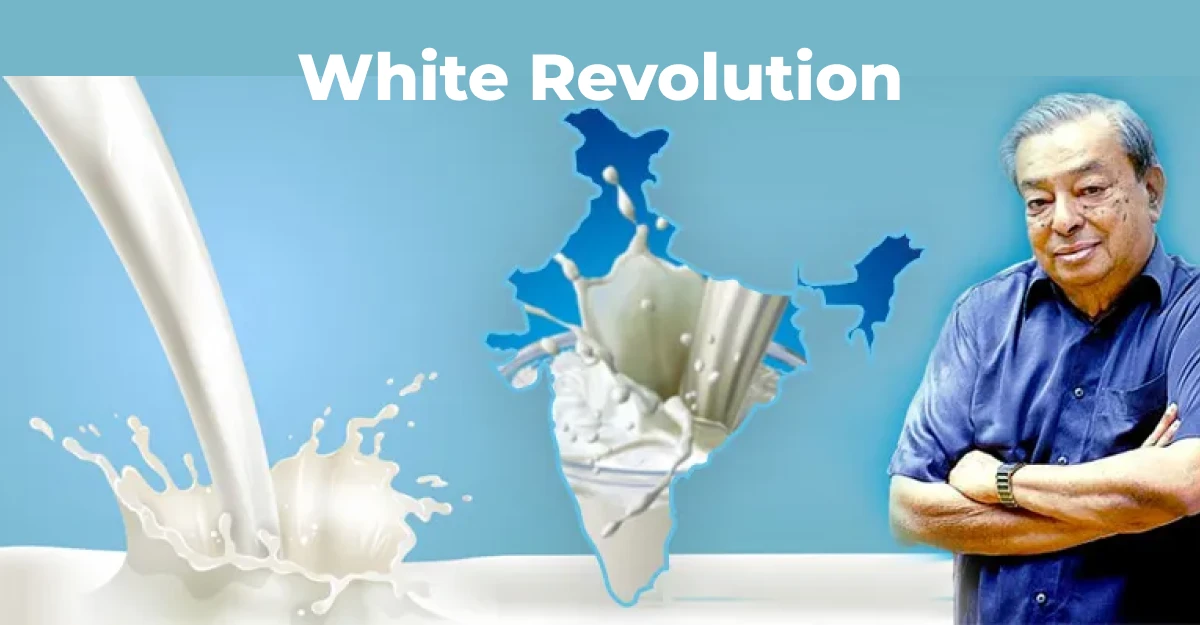
Do you know, before AMUL, we had to import milk from New Zealand? Now you must have realized why milk products are considered a luxury in Indian households. The Indian government realized the fact that a masterstroke is needed to end the dependency of milk on foreign countries. And that masterstroke was none other than the “White Revolution.” It is also known as the “Operation Flood” campaign that aimed to grow indigenous milk production exponentially. On the 2nd of October in 1970, then Prime Minister Indira Gandhi inaugurated the “White Revolution” in Motihari (Bihar). Over 100 high-milk-producing cows were imported from New Zealand. This is the crucial aspect of Amul Case Study. The goals of White Revolution were crystal clear-
- To increase the quality and quantity of milk so that consumers can have it at affordable prices.
- To provide good prices for milk to the milk farmers.
- To improve the breeding practices among cattle owners with required training and financial assistance.
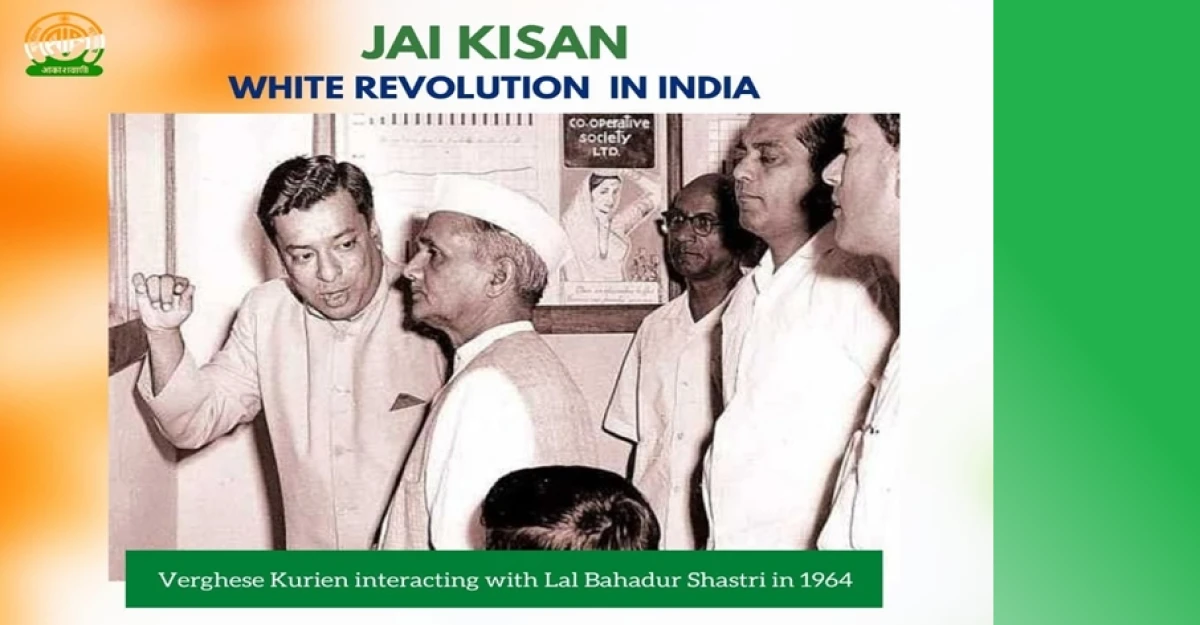
Two organizations collaborated to fulfill these objectives-
- NDDB: National Dairy Development Board
- AMUL: Anand Milk Union Limited
They established several cooperatives in India. They bought fresh milk from local farmers at fair prices. Also, they provided the latest equipment to increase production levels without any expensive capital investment.
Dr. Verghese Kurien: Father of White Revolution in India & the Core of AMUL
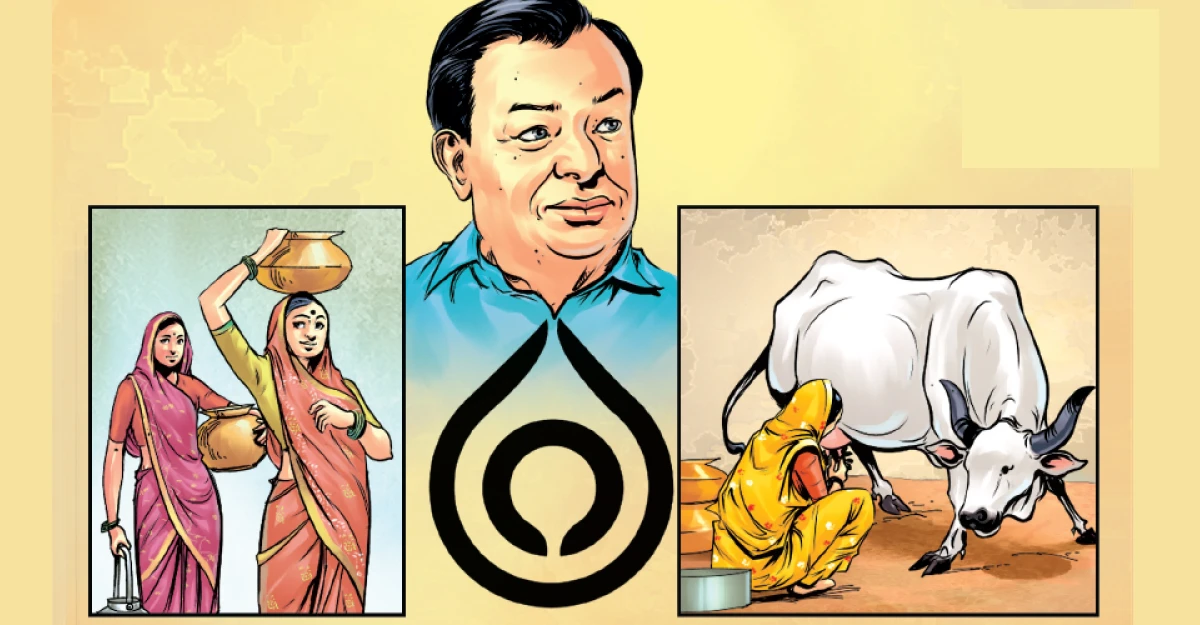
You can never miss the name of the great leader Dr. Verghese Kurien in the “Amul Case Study.” Born in March 1921, Dr. Verghese Kurien, the visionary behind the white revolution in India. He embarked on a mission to transform the country’s dairy industry and empower farmers. With his determined spirit and innovative strategies, he spearheaded the creation of dairy cooperatives, most notably the Gujarat Cooperative Milk Marketing Federation (GCMMF) and the renowned Amul brand.
Dr. Verghese Kurien had two philosophical objectives-
- Value for Many: Profitable for farmers
- Value for Money: Profitable for consumers
Kurien understood that the key to success lay in organizing farmers into cooperatives. He established milk collection centers in rural areas, providing a reliable market for farmers’ milk and ensuring fair prices. This not only improved farmers’ incomes but also addressed the challenge of milk spoilage.
Furthermore, Kurien revolutionized milk processing by introducing advanced technologies such as pasteurization and cold storage. These innovations enhanced the quality and shelf life of dairy products, opening up new avenues for value addition and export.
Under Kurien’s leadership, India transformed from a milk-deficient nation to the world’s largest milk producer. His approach to empowering farmers, fostering cooperative movements, and embracing technological advancements revolutionized the dairy industry. Dr. Kurien’s remarkable contribution will forever be remembered as a turning point in India’s agricultural landscape, uplifting the lives of countless farmers and ensuring food security for the nation.
AMUL: Strongest Brand in FMCG Market
Look at the following data-
| Brand’s Name | AMUL (Anand Milk Union Limited) |
| Industry | Dairy & FMCG (Fast Moving Consumer Goods) |
| Founded | 14th December 1946 |
| Founder | Tribhuvandas Patel |
| Expanded by | Dr.Verghese Kurien |
| Headquarters | Anand, Gujarat |
| Owner | Dairy Producers of Gujarat |
| Area Served | Worldwide |
| Revenue (FY22) | Rs.52,000 crore |
| Turnover (FY22) | Rs.61,000 crore |
| Milk Handling Capacity | 5.2 million liters per day |
| Milk Production per Day | 3.3 million liters |
| Number of Milk Farmers | 7,15,028 |
How Amul Built Its Successful Empire?
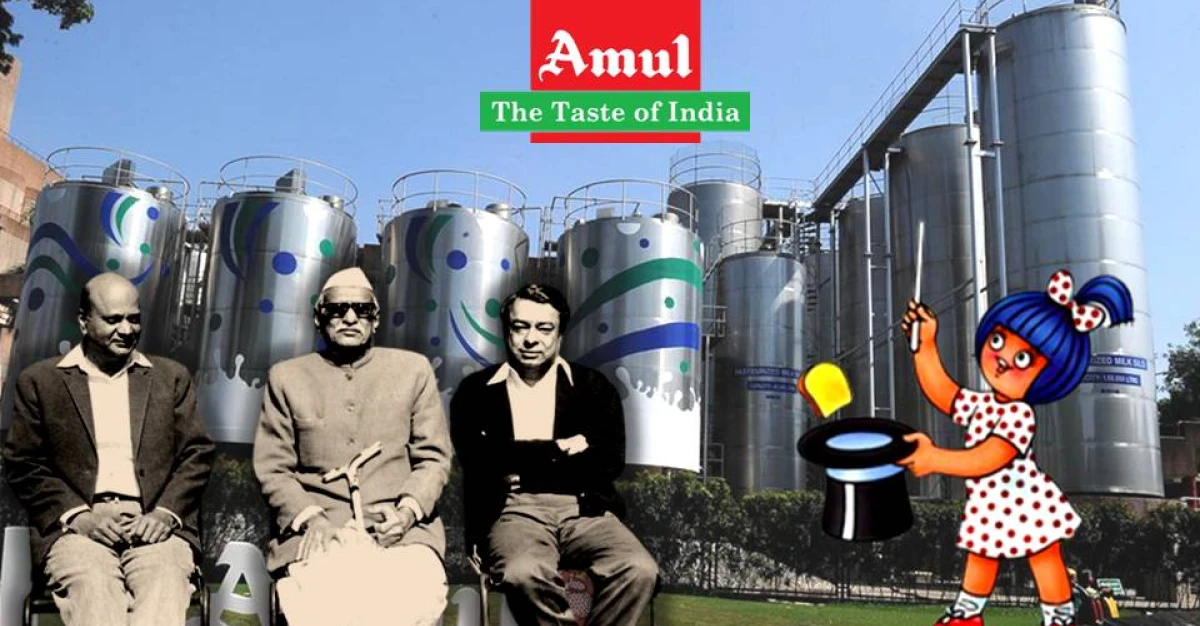
Here we are at the final part of the Amul Case Study. The data mentioned in the above table are enough to describe the grand success of AMUL. But what led to this sky-high success? This is the crucial part of the Amul Case Study. Here are some key factors that have contributed to Amul’s success:-
1. Cooperative Business Model
Amul operates on a cooperative model, which means it is owned and governed by farmers. It was established in 1946 as a response to exploitation by middlemen, and it aimed to empower farmers by ensuring they received a fair share of the profits. This cooperative structure allowed farmers to pool their resources, collectively manage the dairy operations, and benefit from economies of scale.
2. Milk Procurement Network
Amul has established an extensive milk procurement network, connecting millions of farmers across thousands of villages in India. This network ensures a steady and consistent supply of high-quality milk, which is a crucial factor for the success of any dairy business.
3. Milk Processing, Packaging, and Product Diversification
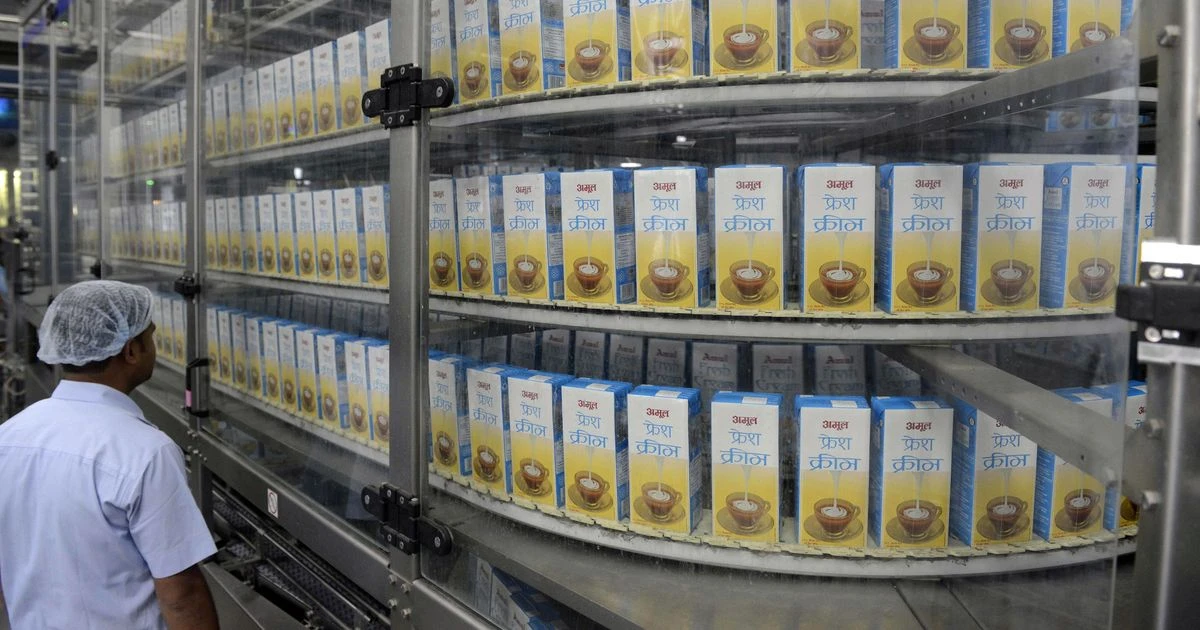
To deliver milk long distances and to ensure long shelf life, Amul uses innovative methods to process and package the products. While Amul initially focused on milk and milk products like butter and ghee, it gradually diversified its product portfolio. Today, Amul offers a wide range of dairy products, including cheese, ice cream, yogurt, milk powder, chocolates, and more. This diversification has helped Amul cater to different market segments, expand its customer base, and generate higher revenues.
4. Quality and Affordability
Amul has built a strong reputation for providing high-quality dairy products at affordable prices. By maintaining strict quality control measures, investing in modern technology, and adhering to international standards, Amul has gained the trust of consumers. Its products are known for their freshness, taste, and nutritional value, making them popular among customers across various demographics.
5. Umbrella Marketing and Advertising
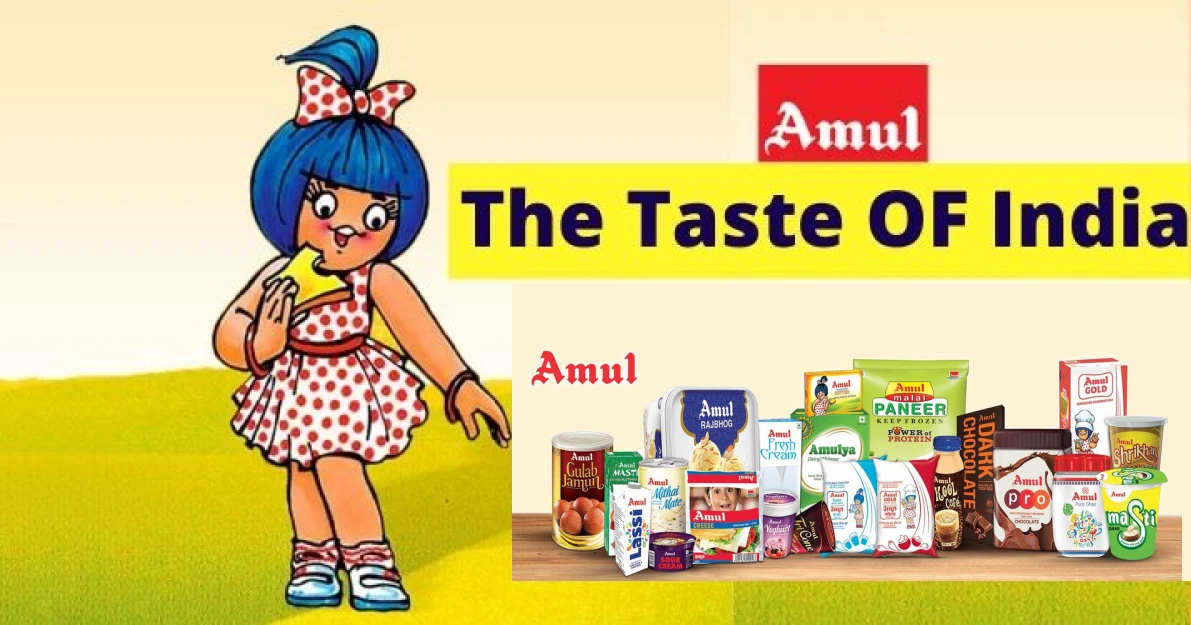
Amul is renowned for its innovative and memorable advertising campaigns. It uses an “Umbrella Marketing” strategy to promote all of its products under the same brand name i.e. Amul. It has effectively used witty and creative advertisements featuring its mascot. That is the Amul girl, who connects with consumers and creates brand recall. Also, it uses a moment marketing strategy with alluring taglines. This consistent and engaging marketing strategy has helped Amul remain a top-of-mind brand in the dairy industry in India.
6. Distribution Network
Amul has established a robust distribution network that reaches even the most remote areas of India. Its distribution channels include a vast network of milk collection centers, processing plants, and an extensive distribution system involving cooperatives and third-party agents. Amul Franchises are considered one of the most profitable franchises in India. This wide reach ensures that Amul products are readily available to consumers across the country.
7. Social Impact
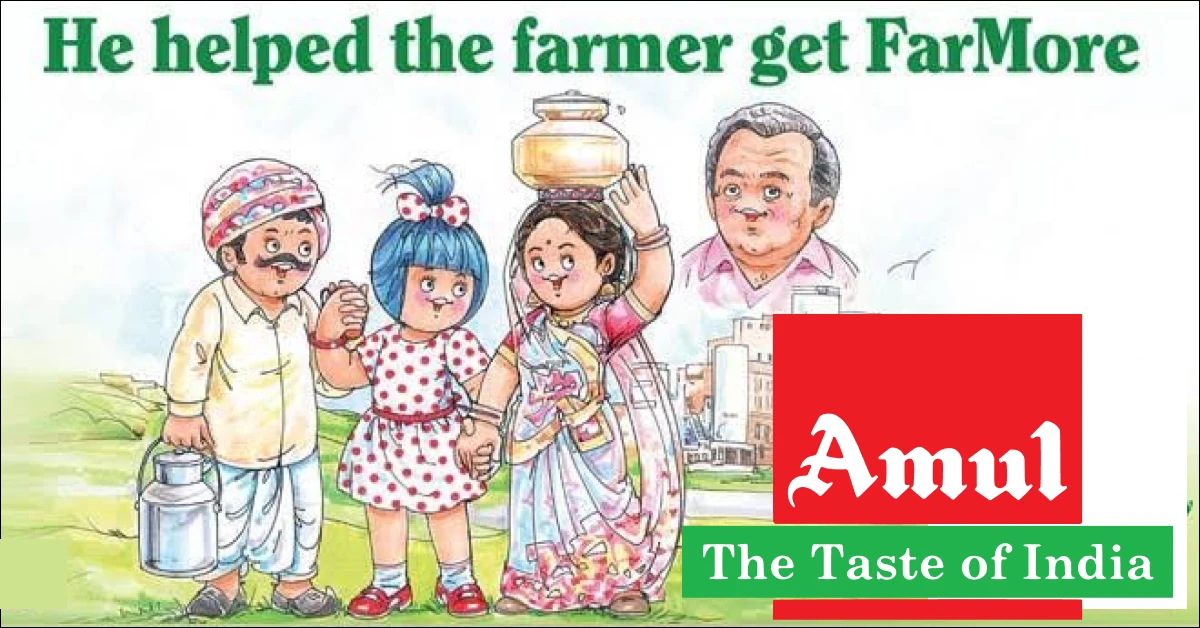
Amul’s success is not only measured in financial terms but also its social impact. By empowering farmers and providing them with a fair income, Amul has played a crucial role in rural development and poverty alleviation. It has uplifted the lives of millions of farmers and their families, improving their socio-economic conditions and creating a positive ripple effect on rural communities.
Final Words
The Amul Case Study teaches us the power of teamwork, innovation, and thinking outside the box. It shows how a group of farmers in India joined forces to create a cooperative that revolutionized the dairy industry. With their “Amul girl” mascot and catchy advertising campaigns, they built a beloved brand. They diversified their products, expanded their distribution network, and empowered farmers along the way. Amul’s success story teaches us that by working together, embracing creativity, and caring for the community, we can achieve remarkable things and make a positive impact on people’s lives.

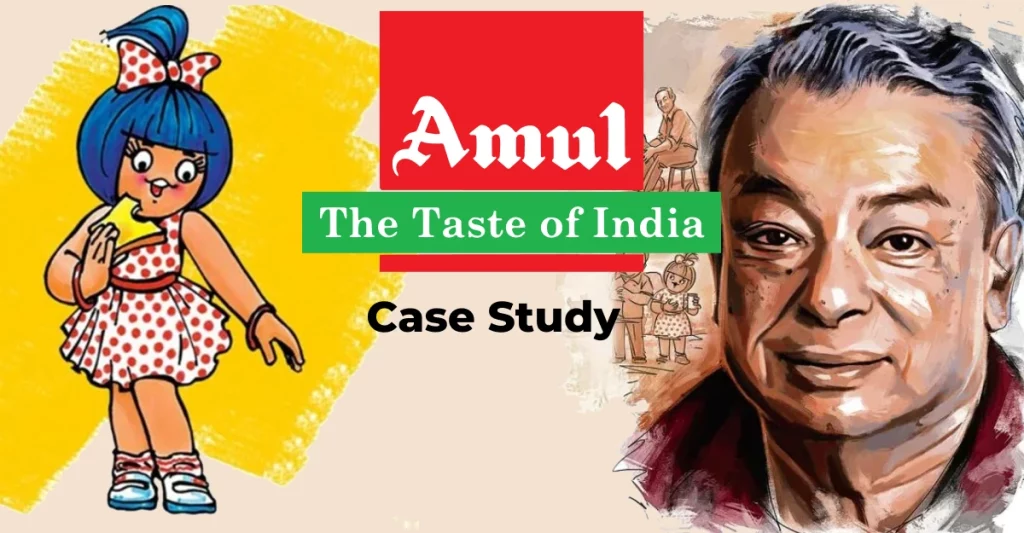
Amul has constantly been innovating, be it launching new products, creative marketing campaigns, or challenging traditional societal trends to come up with better ones. It’s objective was to provide proper marketing facilities for the milk producers of the district. As mentioned, Amul in the 1960’s became the first brand in the world to make skimmed milk powder from buffalo milk.Yes, Amul has made a social impact & their teamwork is appreciable though.
To be honest, I generally don’t read but when I started reading, I became curious to know the whole story and enjoyed reading.
Also, It is very well researched and thorough, images are well placed, words are easy to understand.
Keep writing, we love it 🙂
Before this I didn’t not know much about Amul but with the help of this article I got some deep knowledge about Amul and how did it started and and what is the business model and etc..
I really enjoyed reading this artical..😊